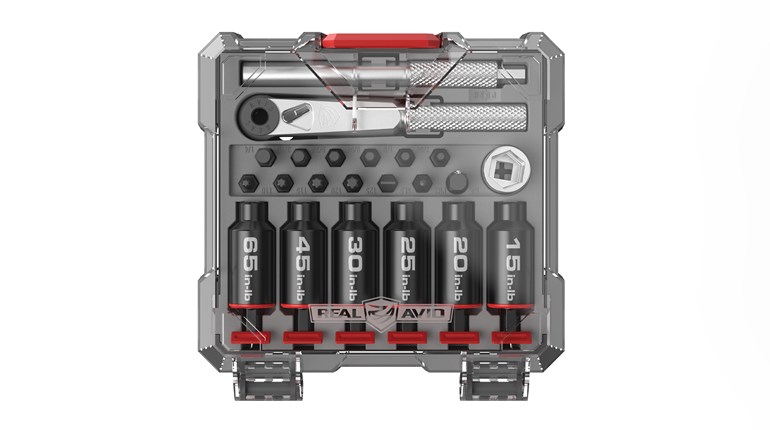
Real-world carry puts some maintenance demands on a firearm that are different from a range-only arm, and we made some suggestions here about cleaning and lubrication. A second major consideration isn’t—strictly speaking—carry “maintenance,” but it too can have a huge impact on firearm performance in extremis.
What we’re talking about is the condition of your defensive ammunition. While most modern cartridges are modest miracles in terms of reliability and longevity, normal handling—in the guise of exposure to firearms cleaning and lubricating fluids—can still introduce problems. Excesses of either in the firearm, we hope, have been accounted for.Don’t expect your defensive rounds to “stand to” for years on end.
Beyond pure excess, another difficulty remains: Some of these essential chemicals, and particularly many oils (as lubricants), can deaden cartridge priming. In normal circumstances, even a grossly over-lubed firearm won’t cause the phenomenon—the cartridge doesn’t “dwell” in the gun long enough for migration, capillary or gravity action to move sufficient oil into the primer to bring about deactivation.
If you think it through, however, you may see why your expensively procured and carefully husbanded defensive ammunition has the potential to be exposed to far more oil than regular ammunition: It isn’t shot as immediately, or as frequently. We routinely see fellow shooters unload their buck-a-round (or more) defensive ammo, reload their magazines with range stuff, practice, and then put those same, individual defensive rounds back in the magazine and then in their carry firearm.
In and of itself, this isn’t wrong. But you can see how it means that those individual cartridges spend a lot more time in the gun—not minutes as during practice or training, but quite literally months, perhaps. So as we said, don’t over lubricate, but also don’t lube just anywhere (and especially not in areas in contact with cartridges, though the lacquer-sealed primers of many defensive brands further reduce the possibility of deactivating contamination). Finally, don’t expect your defensive rounds to “stand to” for years on end.
There’s a second component to this duty life notion. Unlike the small chance of oil-caused neutralization, this problem is an incontrovertible fact, and we have seen it happen many times, and even blow up several pistols. (Ergo, pay attention?)
Simply, rounds should not, indeed must not, be chambered over and over and over again in a self-loading or semi-automatic handgun.
The necessary collision of the round with the feed ramp which angles a cartridge up and into the chamber will eventually overcome the case mouth tension that grips the bullet, and the projectile will be “set back” in the case. Once this occurs, cartridges a) aren’t likely to feed properly, or b) if they do feed and are needed (shot), the problem can become dramatically worse. Under-length cartridges are likely to generate substantial overpressures in the chamber, and result in blown-up guns.

We wish we had a straightforward rule of thumb here, but we don’t know of any. Many ammunition manufacturers have methods to prevent or limit the problem (like a post-assembly crimp at the base of the bullet on the outside of the case, or a crimp-grooved/cannelured bullet), and certainly rounds are much more robust in this sense than they used to be. Other makers (rightly) depend on you not to be stupid.
The safest bet is to figure your defensive ammo is a one-year-at-most commodity (thus avoiding oil deactivation), and to rotate the first-fed round to decrease the chances of setback. This latter expedient, as you’ll see, cuts that one-year life down further.
Consider an example. If you’re running, say a Glock 42 or 43 (6 + 1, .380 ACP or 9 mm), it (quite conveniently) has a total of seven rounds, and there are seven days in the week. We mark each cartridge so they can be differentiated. (We use a marking scheme, not numbers, just because it’s quicker for a given level of legibility in all light conditions, and without having to rotate the cartridge to mark or read.) When we load a “new” set of cartridges, we start with our “|,” and load it first all week. The order of the other cartridges doesn’t matter (and indeed the bottom five cartridges stay in the same order all week). We always “turn over” on Saturday morning as it’s usually the least hectic.
Having unloaded prior to safe storage Saturday night, this implies that Sunday morning we remove the top round in the mag, replace it with our “|” round, load and chamber, and then top up the magazine with our loose (but marked) round. As we’ve said before, “rinse, lather, repeat” through the week.
By next Saturday morning, that “|” round has been chambered seven times. It now gets loaded to the bottom of a different magazine (remember to alternate mags to rest those springs). The “||” round is then loaded and chambered, and the mag topped up with the remaining five marked rounds—order, again, doesn’t really matter. By the next Saturday, this round (marked “||”) too will have been chambered only seven times.
Repeating this cycle will get you through seven rounds in seven weeks, and none of those rounds will have been chambered more than seven times. Extrapolate to a year, and you’ll see that three or four boxes of that “shootable gold” will suffice. Dunno about you, but we think $60-$95 per year is a small price to pay for being sure your defensive ammo hasn’t been mechanically compromised.
A couple of questions may have occurred to you. First, is so much chambering/unchambering (and all the monitoring it requires) really necessary? The answer is conditional: If you use the same handgun as your home defense firearm, then, “no.” But this also presumes that firearm is essentially never out of your physical control. If it is, then you’re violating a pretty serious safety rule, perhaps in two ways: A charged firearm is out of your direct control/supervision, and/or you’ve stored a loaded firearm. It’s your call, but either is a potentially bad breach. The reverse of this is then a “yes,” of course: All the re-chambering is necessitated by safety.
Second, how’d we get to seven chamberings as our max? And, no, we didn’t just randomly match it to the days of the week. We ran a test with a bunch of different ammunition types (six defensive or “tactical,” and two very common “other” types). It was really boring and tiring—hundreds of reps chambering, unloading and measuring—but seven feed ramp collisions is slightly less than half the minimum number of loadings at which we observed any setback in any of the rounds. Sixteen chamberings was the earliest, and one of our “other” types never showed setback at all (American Eagle/Federal 115 grain “ball”): We just gave up at 25 chamberings of the same round.

Third, remember you’re not “losing” or “wasting” those expensive defensive rounds. They should be shot as practice rounds. We think it’s more useful to save up several batches and shoot them all together: It gets the brain and body better tuned to the generally heavier recoil of defensive ammunition than just a mag or two.
And yes, we know that many defensive gurus insist you should shoot your defensive ammo all the time to be truly prepared. They’re right. They’re also—we politely submit—dreaming. Nobody can afford this “on their own hook,” and it’s why you should start reloading if you don’t: Chrono your defensive ammo and produce practice ammo that proxies its recoil profile and point of impact. You’ll pay for your reloading kit in no time, and get better a lot faster. More on this topic soon.
Another deceptively important point: When you chamber a round, don’t think you can extend mechanical cartridge “life” by nursing the slide and round into battery. This is actually more likely to harm the mechanical integrity of the round. Pull the slide back and then lift your hand sharply upward off the slide. Merely letting go slows the slide down whether you realize it or not, and is a uniformly poor practice for chambering at any time, under any circumstances.
We close with a final admonition: Ignore this attention to the mechanical competence of your defensive ammo at real peril. Our often-stated goal is to be so aware that we avoid trouble altogether, and if that fails, to present so well prepared that aggressors decide “oh-oh, wrong pigeon,” and withdraw of their own volition. The final state is deeply unhoped-for: Where firearm defense is now the only choice. If your ammo’s good, so will you likely be; if it isn’t, a failure to feed/function or a blown-up pistol (remember that overpressure business) will be the least of your worries.
Now Carry on.


































